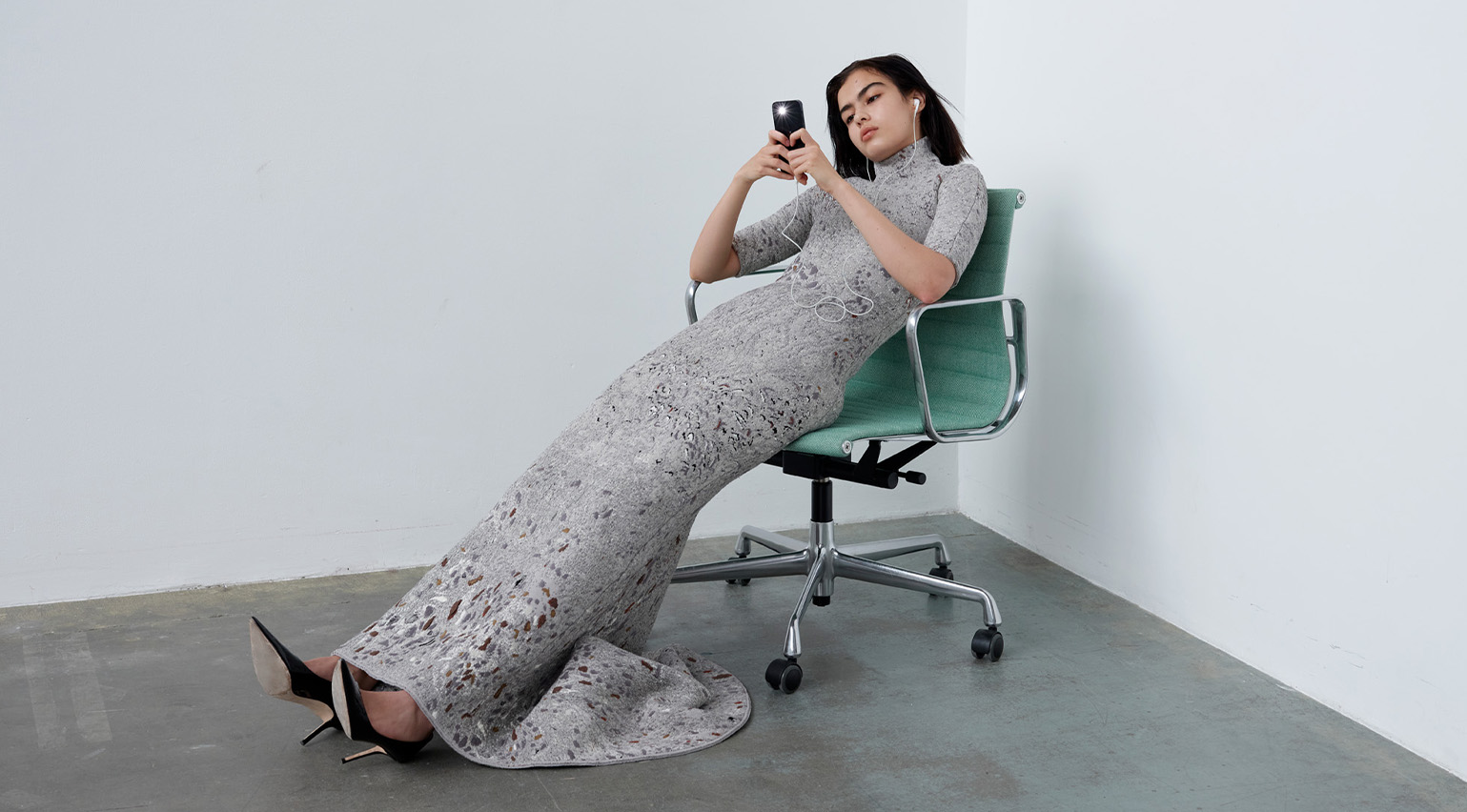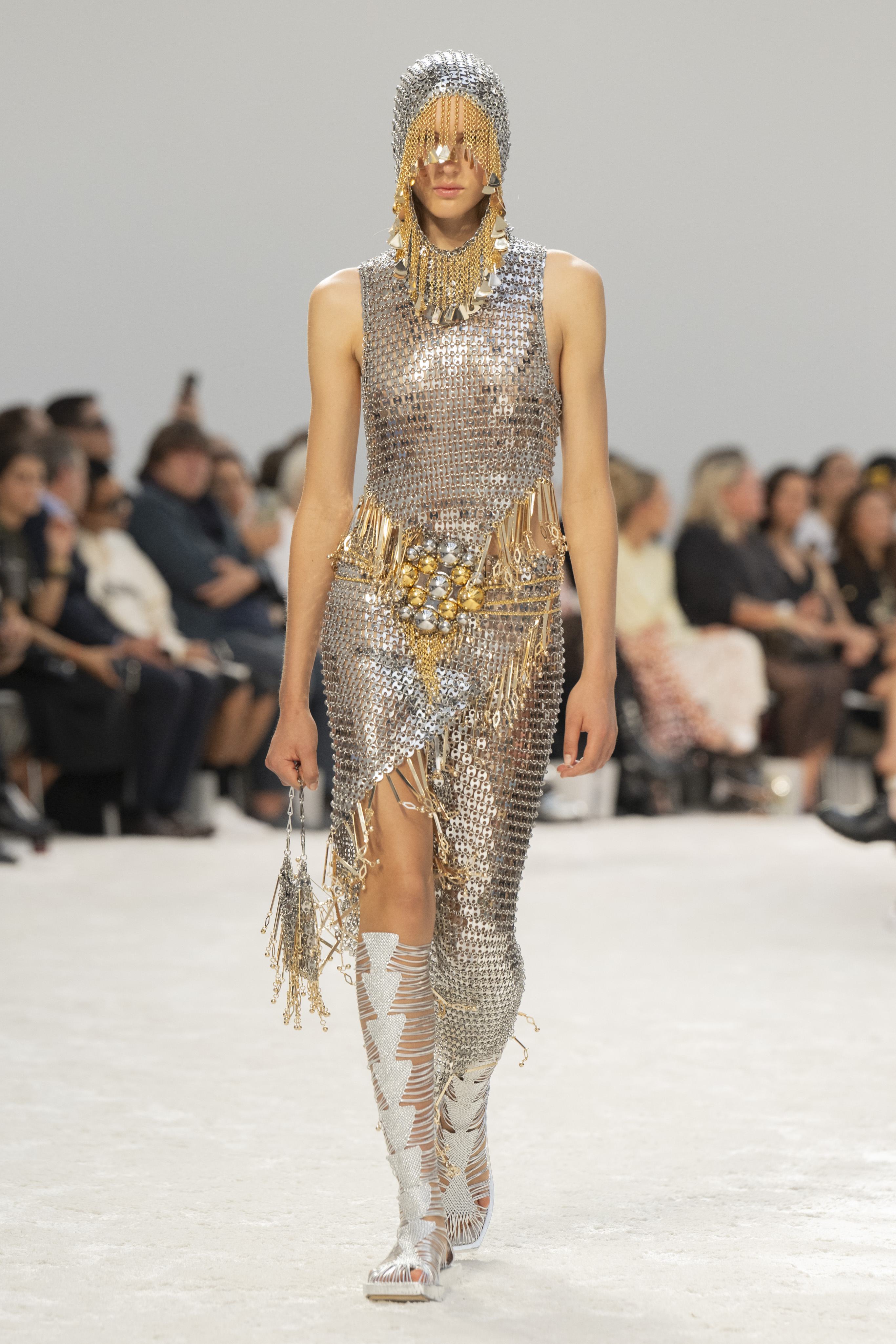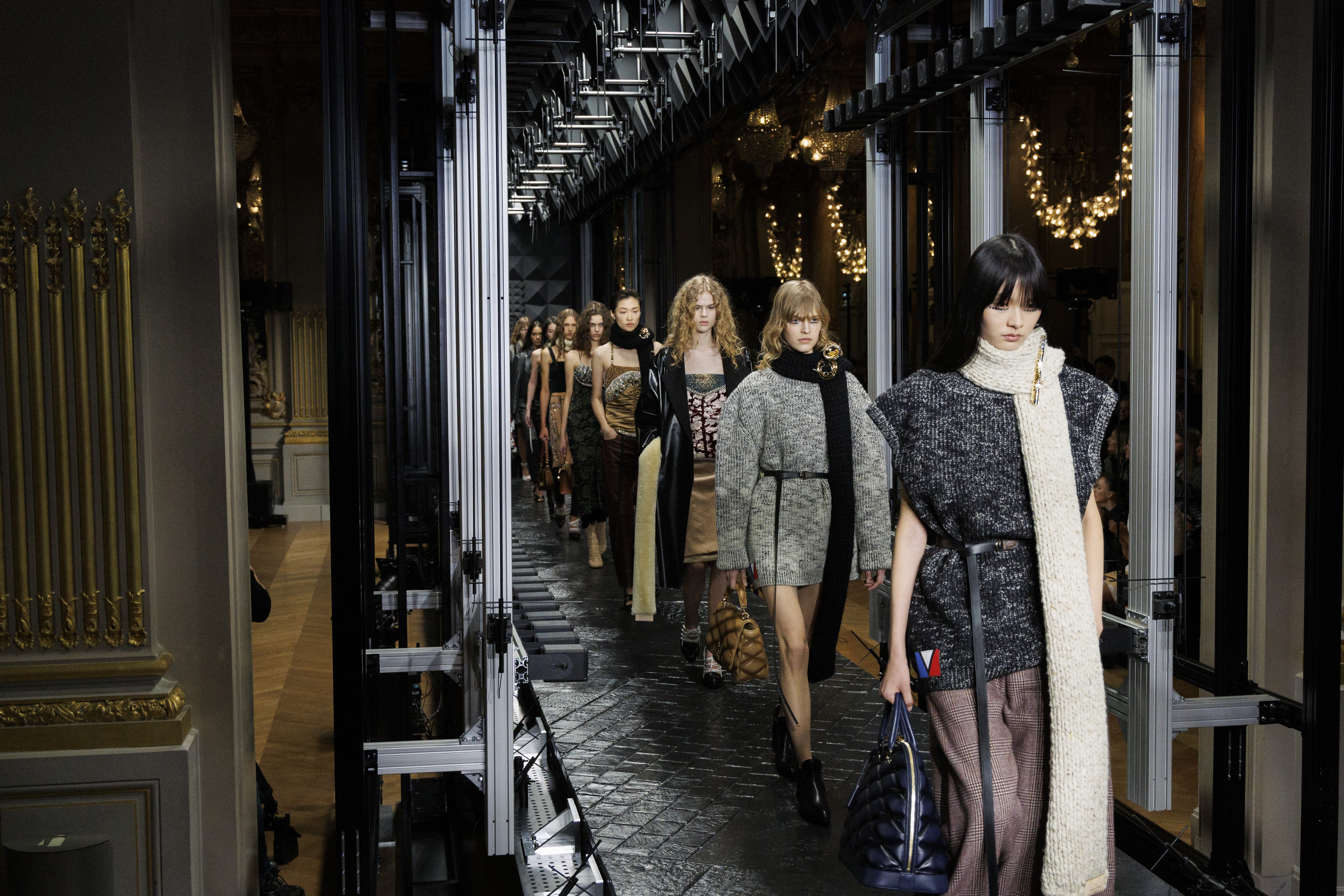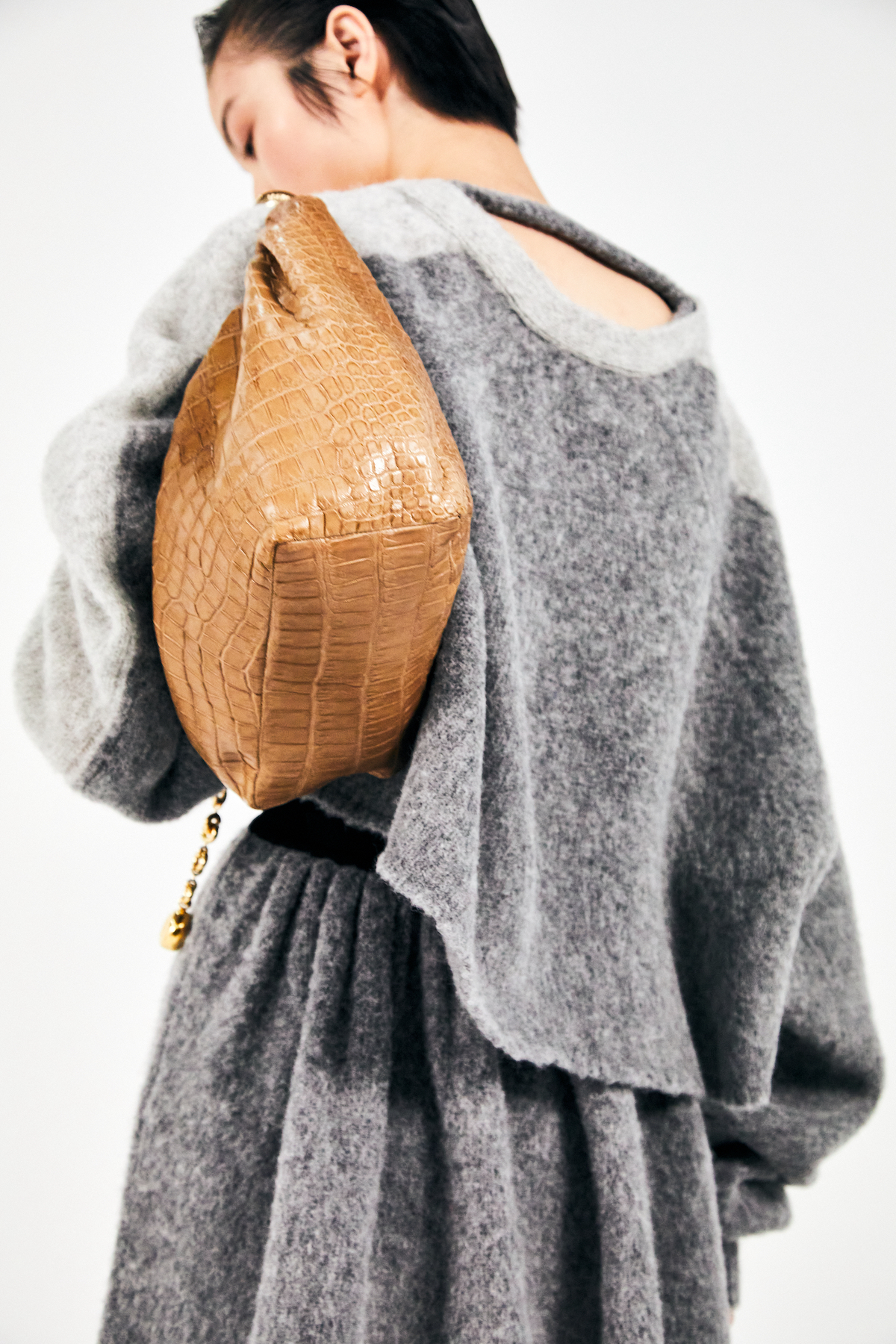
Why were there so many polo shirts on the runway this season? And all those see-through dresses on Instagram? Why do silhouettes shift from skinny to baggy, and back again? And how did ballet shoes become so popular?
It’s nice to think that all of these trends are the byproduct of a spontaneous cohesion of taste among people around the world, but really, the popularity of these styles – particularly when they shift from runway to retailer – is the result of a considered process of pooling and analysing data known as trend forecasting. Since trend forecasting as we know it began around the 1960s, people have attended fashion shows, scoured magazines, studied street style, surveyed stores and, more recently, scrolled through social media to sell brands information about what people were buying now and what they would likely buy in the future.
But we’re about to enter 2024 (by the time you read this article you might already be in it) and predicting trends is no longer a practice only undertaken by fastidious forecasters – rather, as industries the world over grapple with the technology, it is AI which is reshaping the future of trend forecasting. Take, for example, the Paris-based trend forecasting agency Heuritech.
Heuritech: a case study in AI trend forecasting
First founded in 2013, Heuritech has since developed complex proprietary image recognition technology allowing its team to analyse around three million fashion images on social media every day. These images are sourced from accounts that regularly post fashion-related content – with a particular focus on colour, texture and silhouette – using technology which was developed by its French founders Tony Pinville and Charles Ollion, who both have PhDs in machine learning (Pinville is now the CEO of Heuritech).
Heuritech largely centres on the division of its data through three audience panels. There are the ‘edgy’ consumers ‘who tend to be early adopters [of trends], are often drawn to smaller or emerging brands, and embrace a style or product long before it gains mainstream popularity,’ Julie Pont, Heuritech’s fashion and creative director, tells Wallpaper*. Next, there are the ‘trendy’ consumers who ‘stay up-to-date with the latest and most desirable brands, styles, and products and typically embrace trends at their peak’. Finally, there are the ‘mainstream’ consumers who engage with major styles and products ‘once they have achieved widespread popularity and usually take a more passive role in fashion’.

The trends detected on these accounts – which might be a specific item, like ‘oversized football shirt’, or a broader theme, like ‘yellow’, ‘metallic’ or ‘fleece’ – are further subdivided by Heuritech’s image recognition technology according to geography and seasonal popularity so that brands (who opt for standard or tailor-made reports) can see exactly when and where particular styles are likely to be most popular.
Of Heuritech’s three audience panels, the ‘edgy’ one is by far the most significant, since that is where the Heuritech algorithm picks up on its ‘early signals,’ or ‘slight changes in activity among edgy influencers who are often those who breathe life into trends’. Using these early signals, the Heuritech algorithm picks up on emerging trends before they become mainstream and reach their highest market potential. Brands such as Dior, which used Heuritech’s data to help develop a new iteration of the classic Miss Dior bag; Rabanne, which worked with Heuritech to understand how customers were responding to the brand’s 1969 bag, as well as Prada, Louis Vuitton and New Balance, use the information sourced by Heuritech to shape their upcoming projects and, consequently, shape what looks are reworked by high-street stores into clothing for a mass audience.
‘[It’s an approach] which enables brands to move beyond restrictive data like past sales, standard marketing panels, and intuition-based forecasting,’ says Pont. ‘Heuritech's solution promotes informed decision-making.’
How will AI trend forecasting shape the future of fashion?
AI trend forecasting, then, is guiding the clothes we see on the runways and on the streets. To some, this exacting, machine-driven process of digitisation and categorisation might sound terrifying (to others, exciting). But it’s happening. And, in some ways, it merely continues trend forecasters’ long reign in guiding the clothes that we buy and wear.
As historian Regina Lee Blaszczyk and economist Ben Wubs write in their 2018-published book The Fashion Forecasters: A Hidden History of Colour and Trend Prediction, it is ‘by no accident do similar styles find their way onto the Paris runways and the fast-fashion racks of Primark and Zara almost simultaneously… this high level of coordination is made possible by trend reports from the fashion industry’s shadow information system, a hidden reconnaissance operation that gathers and analyses data and recirculates it as style forecasts.’

As technology has become faster and more sophisticated at analysing data, so too has trend forecasting. Generally, trend prediction models fall into two categories: micro-trends, which tend to last for a few months to a year, and macro-trends, which last far longer. In its early days, trend forecasting was primarily concerned with macro-trends; for instance, the 1970s were defined by flared pants, earthy tones, and slouchy boots; the 1980s were power suits and bright colours, et cetera. But micro-trends became more prominent in the 2010s as social media blossomed and data analysis tools became more advanced. Normcore, health goth and athleisure were common parlance by 2014 and now, in 2023, a new micro trend seems to emerge every month, with Barbie-core, ballet-core and ‘coastal cowgirl’ just some of the latest.
The prevalence of AI in trend forecasting – whereby millions of images can be trawled each day – seems like it will inevitably only increase the speed at which micro-trends appear. That’s a worrying development from a sustainability standpoint, since the faster trends fall into and out of fashion, the faster clothes are bought and discarded. But AI-reliant forecasters like Heuritech assert that their technology promotes sustainability because it takes the guesswork out of what consumers want and, consequently, means that brands produce fewer clothes that don’t get bought.
Whether AI forecasting encourages or inhibits wasteful consumption is up for debate; as is the question of whether it encourages or inhibits creativity. It seems almost inevitable that AI will circumvent innovation to some extent by encouraging brands to produce only what is algorithmically projected to succeed. Yet, when asked this question Heuritech told us that, if used with innovative intention, they believe their technology can lead to more imaginative creations.

‘By providing brands with actionable insights, can hone in on market trends that resonate with their brand DNA and commercial goals, rather than blindly pursuing mass trends,’ Pont says. ‘Heuritech supplies the data, but it's up to the brands to make informed decisions. Some clients even use our data to defy conventional trends, targeting niche markets to differentiate themselves with genuinely original products.’
‘Increased efficiency allows humans to focus on their unique added value that AI cannot replace – ingenuity and creativity,’ she continues.’
According to McKinsey analysis, generative AI could add $150 billion, conservatively, and up to $275 billion to the fashion and luxury sectors in the next three to five years. With that kind of money coming in, you don’t need a trend forecaster to tell you that AI will be in fashion for the long haul. The real question is what it might change. So far, there are some hints about what AI trend forecasting could bring– more micro-trends, collections defined by the desires of specific markets, the possibility of innovative designs that subvert AI-defined trends, and more time for designers to create, rather than worry about logistics.
London-based trend forecasting agency WGSN, which uses a mixture of AI and human analytics in its reports, echoes Heuritech’s notion that it is the responsibility of people to innovate based on the information provided by AI. ‘AI is already reshaping how we forecast,’ Francesca Muston, WGSN’s vice president of fashion, tells Wallpaper*. ‘But understanding how to blend it with human expertise, wider domain context and creativity are really the key to its future success.’







